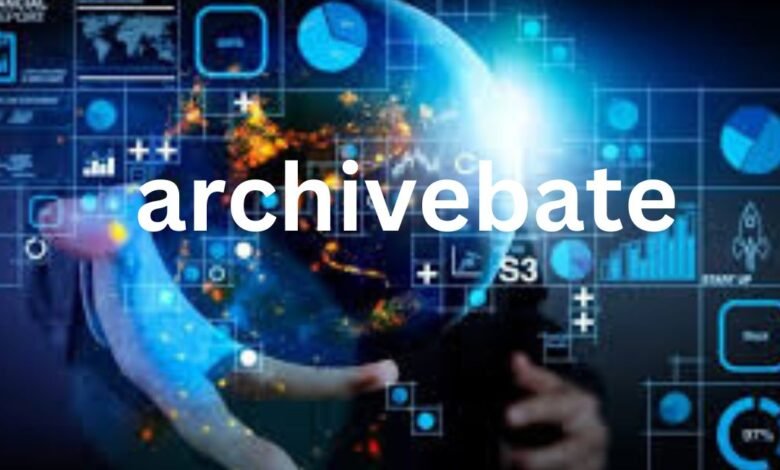archivebate

Welcome to the world of “archivebate” – where nostalgia and the internet collide to bring you an exhilarating journey down memory lane. Whether you’re a pop culture enthusiast or simply looking to relive your favorite childhood moments, this article is your passport to nostalgia.
“archivebate” is a unique blend of archival content and entertainment that transports you back in time. From vintage commercials to forgotten TV shows, we’ve got you covered. Discover the hidden gems of the past that will make you laugh, cry, and everything in between. Get ready to immerse yourself in a world of timeless entertainment.
Our brand voice epitomizes the excitement and fascination that comes with revisiting the archives. We are your spirited guide through the corridors of history, unearthing forgotten treasures and sharing them with you. Join us as we embark on this journey, celebrating the magic of the past and embracing the nostalgia that connects us all.
No matter your age or interests, “archivebate” promises to captivate and entertain. So buckle up and get ready to unleash your inner explorer as we dive headfirst into the enchanting world of the past. Let the journey begin!
What is archivebate?
In a world dominated by the ephemeral nature of digital content, archivebate stands as a testament to the importance of preserving and celebrating our collective history. It is a platform that curates and showcases a diverse range of archived material, ensuring that the memories of the past are not lost to time.
Archivebate is more than just a collection of old videos and photos. It is a celebration of culture, a time capsule that allows us to immerse ourselves in the sights and sounds of bygone eras. It brings together a community of like-minded individuals who share a passion for nostalgia and a desire to preserve the past.
By delving into the archives, we gain a deeper understanding of our society’s evolution and the cultural milestones that have shaped us. It provides an opportunity to reflect on the past, appreciate the present, and perhaps even gain insights into the future.
The importance of archiving in digital preservation
In the digital age, where information is created and shared at an unprecedented rate, archiving plays a crucial role in preserving our digital heritage. With every passing moment, countless terabytes of data are generated, and without proper preservation efforts, much of this valuable content could be lost forever.
Archiving is not just about storing data; it is about ensuring its accessibility and usability for future generations. It involves capturing, organizing, and preserving digital content in a way that allows it to be easily retrieved and understood. This is especially important considering the rapid obsolescence of digital formats and technologies.
Digital preservation is not a one-time task but an ongoing process. It requires a proactive approach that anticipates future challenges and adapts to new technologies. By implementing robust archiving strategies, we can ensure that our digital heritage remains intact and accessible for generations to come.
Types of archives
Archives come in various forms, each serving a unique purpose and catering to different needs. Here are some common types of archives:
- Digital archives: These archives focus on preserving digital content, such as websites, social media posts, and digital documents. They employ specialized tools and techniques to capture and store digital artifacts, ensuring their long-term accessibility.
- Physical archives: Physical archives encompass traditional forms of archiving, such as libraries, museums, and historical societies. They preserve tangible objects, such as books, manuscripts, photographs, and artifacts, often employing temperature and humidity-controlled environments to prevent deterioration.
- Personal archives: These archives are created by individuals to preserve their own personal history. They can include personal diaries, letters, photographs, and other memorabilia. Personal archives allow individuals to document their own experiences and contribute to the collective memory of society.
Each type of archive plays a vital role in preserving our history and cultural heritage. Together, they ensure that our past remains alive and accessible to future generations.
Challenges and considerations in archiving digital content
Archiving digital content presents unique challenges and considerations that are not encountered in traditional archiving methods. Here are some of the key challenges faced in the digital realm:
- Technological obsolescence: Digital formats and technologies evolve at a rapid pace, making it difficult to ensure the long-term accessibility of digital content. File formats become outdated, hardware and software become obsolete, and data can become corrupted. Archivists must stay abreast of these changes and employ strategies to mitigate the risk of obsolescence.
- Volume and scale: The sheer volume of digital content generated daily poses a significant challenge for archivists. It is estimated that over 90% of the world’s data has been generated in the last two years alone. The scale of this data requires robust storage and retrieval systems to effectively manage and preserve it.
- Legal and ethical considerations: Archiving digital content raises legal and ethical questions regarding copyright, privacy, and consent. Archivists must navigate these complex issues to ensure that the rights and interests of both creators and users are respected.
- Metadata and organization: Effective archiving relies on accurate and comprehensive metadata, which describes the content and provides context for its interpretation. Creating and maintaining metadata can be a time-consuming process, but it is essential for the usability and discoverability of archived content.
Addressing these challenges requires collaboration between archivists, technologists, and content creators. It calls for the development of robust archiving strategies that take into account the evolving nature of digital content and the technologies used to access it.
Best practices for creating an effective archiving strategy
To create an effective archiving strategy, it is important to consider the following best practices:
- Define goals and objectives: Clearly define the goals and objectives of your archiving project. What content do you want to preserve? What is the purpose of preserving it? Defining these goals will help guide your decision-making process and ensure that your archiving efforts are focused and purposeful.
- Develop a comprehensive metadata schema: Metadata is essential for the organization and discoverability of archived content. Develop a comprehensive metadata schema that captures essential information about the content, such as title, creator, date, and subject. Consider using established standards, such as Dublin Core, to ensure interoperability and consistency.
- Implement regular backups: Regularly backing up your archived content is essential for its long-term preservation. Implement a backup strategy that includes redundant copies stored in multiple locations to mitigate the risk of data loss.
- Consider migration and emulation: As technologies evolve, it may become necessary to migrate digital content to new formats or emulate old software and hardware environments. Consider these factors when designing your archiving strategy to ensure the long-term accessibility of your archived content.
- Engage with the community: Archiving is a collaborative endeavor. Engage with the community of archivists, technologists, and content creators to share knowledge, exchange best practices, and address common challenges. Collaboration can lead to innovative solutions and ensure the longevity of your archiving efforts.
By following these best practices, you can create an archiving strategy that is effective, sustainable, and adaptable to the evolving digital landscape.
Tools and technologies for archiving digital content
Archiving digital content requires the use of specialized tools and technologies. Here are some commonly used tools and technologies in the field of digital archiving:
- Web archiving tools: Web archiving tools, such as Archive-It and Webrecorder, allow you to capture and preserve websites, including their multimedia content and interactivity. These tools typically employ web crawlers that navigate through websites, capturing and storing their content.
- Digital asset management systems: Digital asset management systems, such as DSpace and Omeka, provide a centralized platform for managing and organizing digital content. They often include features for metadata management, access control, and search capabilities, making it easier to organize and retrieve archived content.
- Preservation file formats: Preservation file formats, such as PDF/A for documents and JPEG 2000 for images, are specifically designed to ensure long-term preservation. These formats employ lossless compression and other preservation-oriented features to minimize the risk of data loss and degradation.
- Digital preservation repositories: Digital preservation repositories, such as LOCKSS and DuraCloud, provide secure storage and preservation services for digital content. These repositories often employ redundant storage and backup strategies to ensure the long-term accessibility and integrity of archived content.
These are just a few examples of the tools and technologies available for archiving digital content. The choice of tools and technologies will depend on the specific needs and requirements of your archiving project.
Case studies: Successful archiving projects
To illustrate the impact and potential of archiving, let’s explore some successful case studies:
- The Internet Archive: The Internet Archive is a non-profit organization dedicated to archiving and preserving digital content. It has captured billions of web pages, books, videos, and audio recordings, making them freely accessible to the public. The Internet Archive’s Wayback Machine allows users to explore archived versions of websites, providing a valuable resource for researchers, historians, and the general public.
- The British Library’s Digital Sound Archive: The British Library’s Digital Sound Archive is an extensive collection of sound recordings, ranging from oral histories to music performances. It provides a wealth of cultural and historical material that can be accessed online. The archive ensures the preservation and accessibility of these recordings, allowing users to explore and engage with the audio heritage of the UK.
These case studies demonstrate the power of archiving in preserving and sharing our cultural heritage. They highlight the importance of collaboration, technology, and community engagement in creating successful archiving projects.
How to find archived content online
Finding archived content online can be an exciting and rewarding experience. Here are a few ways to discover and access archived content:
- Use web archiving platforms: Platforms like the Internet Archive’s Wayback Machine and Archive-It allow you to search for archived versions of websites. Simply enter the URL of the website you’re interested in, and you can explore its past iterations.
- Explore digital libraries and repositories: Many libraries and cultural institutions have digital collections and repositories that house archived content. Websites like Europeana and the Digital Public Library of America provide access to a wide range of digitized materials, including books, photographs, and audio recordings.
- Engage with online communities: Online communities dedicated to archiving and nostalgia often share and discuss archived content. Platforms like Reddit and dedicated forums are great places to connect with like-minded individuals and discover hidden gems from the past.
- Follow social media accounts: Many organizations and individuals share archived content on social media platforms. Follow relevant accounts, such as museums, libraries, and archival projects, to stay updated on their latest discoveries and releases.
By utilizing these methods, you can unlock a treasure trove of archived content and embark on your own nostalgic journey.
Future trends in archiving
As technology continues to evolve, so too will the field of archiving. Here are some future trends to watch out for:
- Artificial intelligence and machine learning: AI and machine learning have the potential to revolutionize archiving by automating processes such as metadata creation and content analysis. These technologies can help archivists manage and process large volumes of data more efficiently.
- Blockchain technology: Blockchain technology has the potential to enhance the security and integrity of archived content. By creating tamper-proof records and decentralized storage systems, blockchain can ensure the authenticity and immutability of archived materials.
- Virtual reality and immersive experiences: Virtual reality and immersive technologies can provide new ways of experiencing archived content. Imagine stepping into a virtual museum and exploring its exhibits as if you were physically there. These technologies can create engaging and interactive experiences that bring archived content to life.
- Collaborative archiving: Collaboration will continue to be a key trend in archiving, as individuals, organizations, and communities come together to share resources, knowledge, and expertise. Collaborative archiving projects can leverage the collective power of the crowd to preserve and promote our shared cultural heritage.
These are just a few examples of the future trends that will shape the field of archiving. As technology advances and our understanding of preservation evolves, new opportunities and challenges will arise.
Conclusion
“archivebate” is more than just a platform for nostalgia; it is a celebration of our shared cultural heritage. By preserving and sharing archived content, we ensure that the memories of the past live on and continue to inspire future generations.
Through this article, we have explored the importance of archiving in digital preservation, the challenges and considerations in archiving digital content, and the best practices and tools for creating an effective archiving strategy. We have also delved into successful case studies, highlighted how to find archived content online, and discussed future trends in archiving.
So, whether you’re a history buff, a fan of vintage pop culture, or simply curious about the past, embrace the magic of “archivebate” and embark on a journey that transcends time. Let the nostalgia wash over you as you discover the hidden gems of the past and connect with a community of fellow explorers. Happy archivebating!




